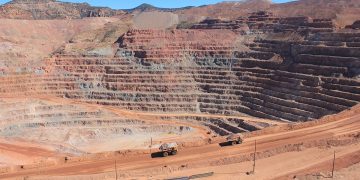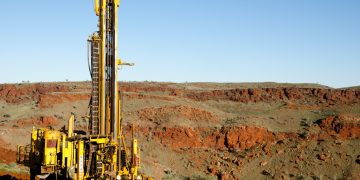In a world increasingly defined by climate uncertainty, investors are searching for tools that do more than protect portfolios—they want exposure to the macro forces shaping our future. Enter weather derivatives: a once-niche hedging instrument now emerging as a potential cornerstone of the alternative asset landscape. Once dominated by energy firms and insurers, this space is rapidly expanding to include hedge funds, family offices, and even retail investors looking to diversify away from traditional macro exposure.
As heatwaves, floods, droughts, and windstorms become more frequent and severe, the financial relevance of weather is no longer abstract. In 2025, weather patterns directly influence global supply chains, commodity prices, insurance payouts, and corporate earnings. The tools to trade those outcomes—weather derivatives—are growing in liquidity, regulatory acceptance, and institutional demand.
This article explores the rise of weather-linked financial instruments: how catastrophe bonds have performed amid climate-driven volatility, how derivatives are used across agriculture and energy, and how retail access to weather futures could transform the asset class from obscure hedge to mainstream portfolio tool.
Catastrophe Bond Performance in Climate Volatility
Catastrophe bonds, or cat bonds, are a foundational component of weather-linked financial products. Issued by insurers and reinsurers, these instruments pay investors attractive yields in exchange for the risk of losing principal if a specified catastrophe—usually a hurricane, earthquake, or wildfire—occurs. If no disaster strikes during the bond’s term, the investor receives regular interest payments and recovers the full principal. But if the named peril triggers a payout, part or all of the capital is redirected to cover insurance losses.
In 2023 and 2024, cat bond issuance soared to record levels, surpassing $18 billion annually. What used to be a specialty product for large reinsurance firms has become a fast-growing corner of the alternatives market. Hedge funds, pension plans, and sovereign wealth funds now participate in cat bond syndications, drawn by the asset’s non-correlation to equities and bonds.
The appeal is particularly strong in today’s environment. With equities volatile, bonds compressed by inflation uncertainty, and private equity facing valuation headwinds, cat bonds offer diversification and an attractive risk-reward profile. Current yields range from 6% to 14%, depending on risk parameters and peril geography.
Cat bond performance during recent climate volatility has been mixed—but largely resilient. The 2022 hurricane season caused moderate losses, but 2023 and 2024 saw lower-than-expected insured losses despite several record-breaking heatwaves and wildfires. As a result, cat bond returns have outpaced high-yield credit over a 3-year rolling window. Moreover, new modeling technologies have improved the pricing of weather-linked risk, attracting investors with more confidence in loss estimation.
Importantly, regulators are embracing catastrophe bonds as viable risk-transfer mechanisms, improving transparency and secondary market liquidity. The Swiss Re Cat Bond Total Return Index is now tracked by ETFs and structured products, helping institutional allocators benchmark this asset class more systematically.
Agricultural vs. Energy Sector Applications
While cat bonds address macro-level climate events, weather derivatives—especially temperature and precipitation futures—have critical micro-level applications in agriculture and energy.
Agriculture has long been one of the most weather-sensitive sectors. From corn and soybean yields in the U.S. Midwest to rice and wheat harvests in Asia, weather determines crop productivity and price stability. Farmers, agri-businesses, and commodity traders have historically relied on traditional crop insurance. But that coverage is often blunt, slow, or insufficient.
Weather derivatives offer more targeted hedging. For example, a farming cooperative in Kansas may buy a degree-day option to protect against a colder-than-average spring. If temperatures fall below a defined threshold, the derivative pays out, offsetting reduced yields. In Australia, vineyards are using rainfall futures to hedge against dry seasons that affect grape quality.
In 2025, agritech platforms and digital insurers are integrating weather derivative functionality directly into insurance dashboards. This bundling makes it easier for producers to price and execute weather risk mitigation in real time, without relying on legacy paperwork.
Energy firms are also core users of weather-linked contracts. Electricity and natural gas demand is highly seasonal and temperature-sensitive. Utility companies use heating degree day (HDD) and cooling degree day (CDD) contracts to hedge demand fluctuations. For example, a utility may go long on CDDs during the summer to hedge against increased cooling costs if the season turns out hotter than forecasted.
With the energy transition accelerating, renewables introduce new weather dependencies. Wind farms are now hedging against low wind conditions, and solar producers hedge cloud cover risk using irradiance-indexed swaps. These structured products are custom-built by weather risk specialists and marketed to power producers with gigawatt-scale exposure.

Trading volumes in these sectors have increased as derivative pricing becomes more accessible and data analytics improve. Platforms like CME and EEX now offer structured weather futures and options with better liquidity, enabling more granular hedging and speculation based on meteorological forecasts.
Retail-Accessible Weather Futures
Historically, weather derivatives were off-limits to most retail investors due to complexity, minimum contract sizes, and a lack of standardization. But the digitization of financial services is changing that. Today, platforms like dClimate, Arbol, and Demex are bringing weather derivatives to smaller institutions and high-net-worth individuals. Some platforms even allow direct retail participation through tokenized contracts and structured notes.
Weather ETFs are also in development, designed to offer exposure to indices like the Celsius Weighted Temperature Index or the Global Drought Risk Index. These funds package weather exposure through a mix of swaps, cat bonds, and weather futures. While still early, they signal a shift toward democratizing access to this new alternative category.
Another innovation is the creation of parametric contracts, which trigger payouts based on objective weather data rather than subjective loss assessment. This approach enables faster settlement and better risk modeling. A parametric derivative might pay $1,000 per degree if average July temperatures in Madrid exceed 38°C—no claims process necessary, just a data trigger. These contracts are increasingly being offered in fractional sizes, appealing to wealth managers seeking differentiated products.
Still, retail access carries risks. Weather derivatives are inherently speculative, with outcomes tied to volatile natural phenomena. Without deep understanding or clear use cases, exposure can lead to misaligned expectations. As such, educational tools, risk disclosures, and platform governance will be critical in ensuring sustainable adoption.
Blending Weather Derivatives Into Portfolios
From a portfolio construction perspective, weather derivatives offer compelling advantages:
- Non-correlation: Weather events are independent of traditional market drivers like interest rates, earnings, or GDP. This enhances portfolio diversification, especially for global macro funds and absolute return strategies.
- Inflation sensitivity: As climate events impact commodity prices, weather derivatives can act as an indirect inflation hedge, particularly in agriculture and energy-heavy portfolios.
- Tail-risk protection: Instruments like cat bonds and rainfall futures offer natural disaster-linked payoffs that can counterbalance traditional asset drawdowns in climate shock scenarios.
- Yield alternative: In a world where bond returns are muted, weather-linked instruments offer above-market yields for tolerable levels of risk, especially when combined with parametric triggers.
Asset managers are increasingly experimenting with “climate overlays” in multi-asset portfolios. A 60/40 equity-bond portfolio may add a 5% sleeve of weather derivatives for alpha generation and downside risk offset. Alternatively, long/short weather strategies—betting on divergent forecasts—can add volatility harvesting potential.
Challenges and the Road Ahead
Despite rapid growth, the weather derivatives market faces structural hurdles. Pricing accuracy still depends on weather models, which can be volatile and vary by region. Standardized benchmarks are still evolving. Legal enforceability and cross-border regulation are inconsistent. And data dependency—especially for real-time, localized forecasts—can impact settlement accuracy.
Moreover, there’s an educational gap. Many institutional allocators don’t yet fully understand how to model weather risk alongside traditional factors. Bridging that gap will require better tools, clearer disclosures, and broader research coverage.
However, the trajectory is clear. As climate becomes a dominant macro force, financial instruments linked to it will grow in relevance. Weather derivatives are no longer just a hedging tool—they’re becoming an investment theme.
Conclusion: From Niche Hedge to Core Exposure
Weather derivatives are stepping out of the shadows of energy traders and reinsurers. They’re evolving into versatile instruments for climate risk hedging, alpha generation, and thematic exposure. Whether through cat bonds, rainfall swaps, or solar irradiance futures, investors now have more tools than ever to trade the weather—and profit from its volatility.
The world is becoming more unpredictable. That doesn’t mean investors must be. Weather derivatives may be the alternative asset class built precisely for the unpredictability that lies ahead.


































